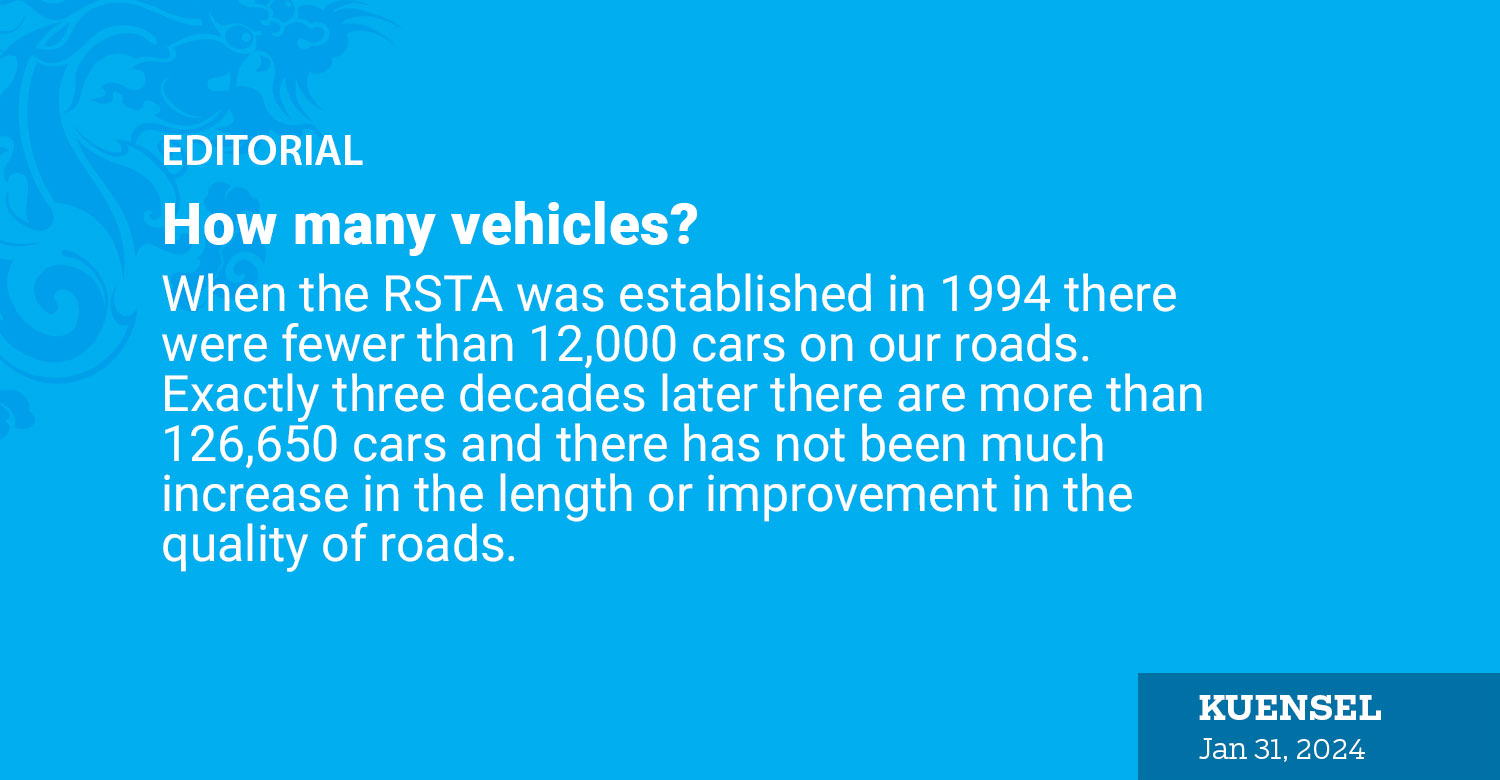When the RSTA was established in 1994 there were fewer than 12,000 cars on our roads. Exactly three decades later there are more than 126,650 cars and there has not been much increase in the length or improvement in the quality of roads.
So the result is no surprise. We see traffic congestion on the roads and a shortage of parking spaces in towns. Despite concerted efforts, there has been an increase in the number of road traffic accidents, deaths and injuries. Last year witnessed a significant upswing in motor vehicle accidents recording a spike from 780 cases in 2022 to 1,060 cases claiming more than 100 lives.
Pollution is already an issue and emission control, the only step taken, is now just a question of tampering with the engine.
If we acknowledge all this as a problem the obvious question is whether anything is being done about this. The answer is a tentative “yes” and a resounding “no”.
There are more traffic police out on our roads, there are new traffic rules and demarcations, there are new rules, and violators have been penalised. And there are traffic plans. Yet there are no solutions in sight.
We are treating the symptoms instead of the real causes of the problem.
As the sale of cars continues despite moratoriums in place, there is no coherent policy on the motor vehicle population. On the contrary, we see new initiatives to increase sales. It is far easier to get a car loan than to process a house loan, despite the housing shortage.
While we are professed champions of the environment we do not seem to acknowledge the ecological problem. Our governments have talked promisingly about establishing better public transport, which is a good solution, but not much has come through. The car has, instead, become a more important status symbol than ever.
To cap it all the growing number of cars is interpreted as a development success, at a time when so-called developed countries do everything possible to control their vehicle numbers.
Apart from leaving municipal corporations to come up with inadequate solutions, we have not seen any initiative so far to even acknowledge the problem.
Even from a lay point of view, it would seem that we need a researched decision on the number of cars that our roads can safely carry and our towns can accommodate. And then we need the policy and the rules to maintain a healthy proportion between the population, road length, and cars. Higher import duties and road taxes might be a good start.


